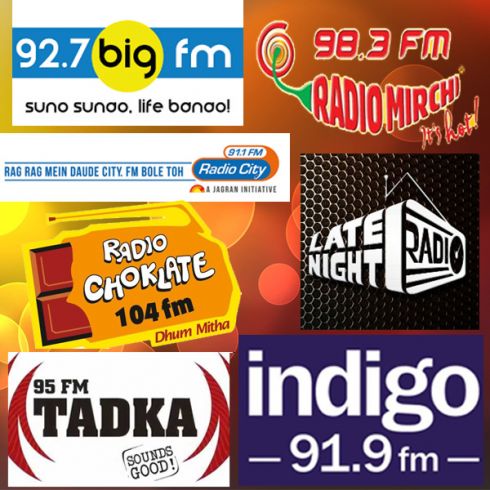

MUMBAI: Every night, as millions of Indians count sheep to reach somnolent bliss, radio executives are busy counting newly found listeners and advertising returns on their innovative late night shows.
The vast network of radio stations across the country has a daunting task though – the 'late night band' holds different definitions in different markets, and late night content that may work in one city may not in another. Add to the confusing mix the advertiser's long held perception that the late night band is a weak link in the programming line up – and you will understand why the witching hour is a such a vexing task for radio programmers in India.
Nevertheless, networks like Indigo FM and Rajasthan Patrika's radio venture FM Tadka have discovered that there is a wide-awake audience for late-night call-in talk shows even in smaller cities.
The returns have however not been as encouraging even as the private FM radio industry completes close to a decade of mature operations. The cost of a 15, 30 or 60-second radio commercial varies and depends upon the frequency of the ad broadcast and the time-slot. Currently, the morning and evening drive times charge a premium rate than middle-of-the-day or late-night spots as the radio audience tends to peak during commuting hours.
The late night still has its takers. Big FM has a night time lineup, which starts from 8 pm with shows like Nayak, Arth and Yaadon Ka Idiot Box. Radio City's quirky night show 'Love-Guru' has been going strong for the last 15 years in the very late slot of 11 pm - 2 am.
So which time band defines a late-night slot? Unlike international radio stations, private FM stations of India are not clear on what defines late night listenership on radio. The international FM show, 'Coast to Coast AM' airs seven nights a week 1 am – 5 am and deals with paranormal themes and has a 'cumulative weekly audience' of around 2.75 million making it the most listened-to programme in its time slot.
Indian radio broadcasters have however not hit such gold yet. The experiments to woo the band however continue in right earnest. Radio Choklate's 'Sahara Bati Sabu Libhi Gala Pare' (After the streetlight goes off) starts at 1 am and goes on till 4 am and the station says it receives a fair number of calls from the audience during the time, in Bhubaneswar, where it airs. Radio Choklate programming head Sangram Mishra says the show does exceedingly well but advertisers are loath to stay on beyond midnight. “We have to give the advertiser incentives to play ads beyond midnight. An ad that costs Rs 200 in prime time gets shot down to Rs150 at night. The reason - advertisers have a mindset that there is no audience at night and we are left with no choice.”
There are programmers who beg to differ. Says a Big FM official on condition of anonymity, “There are advertisers who want to take up slots on the basis of the credible content, jock personality and show payoff. There is a lot of scope to innovate as this time band presents the unique ability of appointment listenership. During the whole day, the radio is the 'multi-tasking medium'. At night, the listener actively chooses to listen and interact on radio.”
FM Tadka's night show 'Do Deewane Sheher Ke' works well in Jaipur and other cities it operates in. Tadka programming head Praveen Sharma avers that the show, hosted by RJ Kabir and RJ Kavya from 9-12 at night is the network's most followed show, and that the station may even go in for a midnight show based on the feedback. “Last year, we did an activity of 1000 hours non-stop RJing and surprisingly, we derived equal number of callers even during the night hours. However, there is a difference in listenership at night between metros and smaller towns. That stops radio stations and advertisers from putting in efforts for the late night band and ads drop post 10:30 pm.”
Radio Mirchi (Amritsar, Jalandhar) programming head Pervez Bhateja shares the sentiment, “Big cities possess a multi-cultural and employment milieu. The listenership is greater than in small towns where private stations demand a different late night programming because of these differences.”
With digital catching up, stations are innovating with their night time content as well. Radio City has recently taken its Love Guru to an app, where listeners can interact with the enigmatic iconic agony uncle at any time they want. Yet, not many stations are experimenting with genres like mature talk shows, shows on the paranormal or even simple story telling, that was once the forte of All India Radio. Anil Srivatsa, now an independent radio professional hosted a radical programme 'Between the Sheets' on Meow TV (now Oye) some years ago, when the station had gone ' the first radio station for women'. Most other stations seem content with aping All India Radio's time tested 'Bela Ke Phool' format – airing retro songs from the 1950s and 60s in the late night hours.
There's much radio can do in the hours when television prime time is over and screen fatigue takes over the jaded net surfer. The Indian listener is all ears. Over to the radio programmer, then.